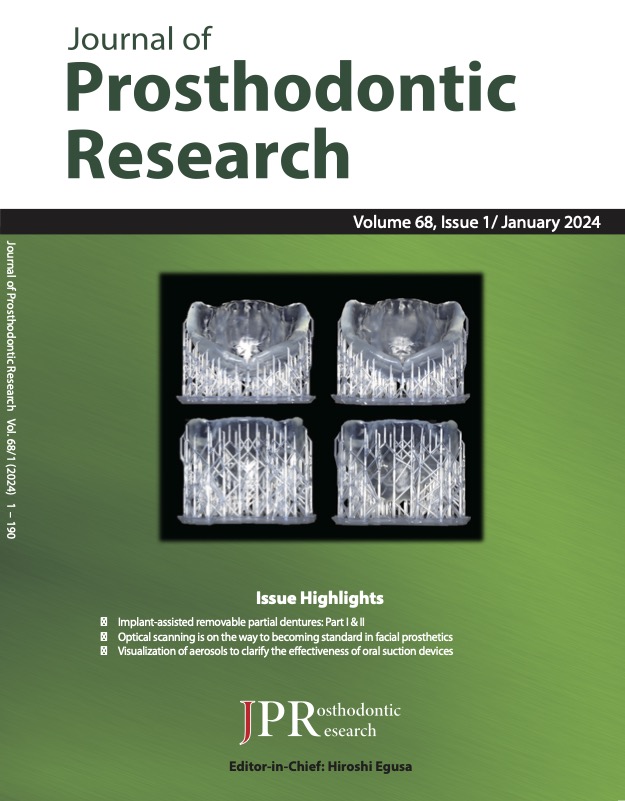Special Edition
Volume 68, Issue 1
Displaying 1-22 of 22 articles from this issue
- |<
- <
- 1
- >
- >|
Editorial
-
2024Volume 68Issue 1 Pages vi-vii
Published: 2024
Released on J-STAGE: January 16, 2024
Download PDF (476K)
Review articles
-
2024Volume 68Issue 1 Pages 1-11
Published: 2024
Released on J-STAGE: January 16, 2024
Advance online publication: June 08, 2023Download PDF (3706K) -
2024Volume 68Issue 1 Pages 12-19
Published: 2024
Released on J-STAGE: January 16, 2024
Advance online publication: June 08, 2023Download PDF (1315K) -
2023Volume 68Issue 1 Pages 20-39
Published: 2023
Released on J-STAGE: January 16, 2024
Advance online publication: May 11, 2023Download PDF (1550K) -
2023Volume 68Issue 1 Pages 40-49
Published: 2023
Released on J-STAGE: January 16, 2024
Advance online publication: May 20, 2023Download PDF (1559K) -
2023Volume 68Issue 1 Pages 50-62
Published: 2023
Released on J-STAGE: January 16, 2024
Advance online publication: June 07, 2023Download PDF (720K) -
2023Volume 68Issue 1 Pages 63-77
Published: 2023
Released on J-STAGE: January 16, 2024
Advance online publication: June 13, 2023Download PDF (2800K)
Original articles
-
2024Volume 68Issue 1 Pages 78-84
Published: 2024
Released on J-STAGE: January 16, 2024
Advance online publication: March 28, 2023Download PDF (1335K) -
2023Volume 68Issue 1 Pages 85-91
Published: 2023
Released on J-STAGE: January 16, 2024
Advance online publication: February 22, 2023Download PDF (2445K) -
2024Volume 68Issue 1 Pages 92-99
Published: 2024
Released on J-STAGE: January 16, 2024
Advance online publication: March 31, 2023Download PDF (1807K) -
2023Volume 68Issue 1 Pages 100-104
Published: 2023
Released on J-STAGE: January 16, 2024
Advance online publication: May 20, 2023Download PDF (1181K) -
2023Volume 68Issue 1 Pages 105-113
Published: 2023
Released on J-STAGE: January 16, 2024
Advance online publication: May 11, 2023Download PDF (1644K) -
2024Volume 68Issue 1 Pages 114-121
Published: 2024
Released on J-STAGE: January 16, 2024
Advance online publication: April 06, 2023Download PDF (1804K) -
2023Volume 68Issue 1 Pages 122-131
Published: 2023
Released on J-STAGE: January 16, 2024
Advance online publication: May 17, 2023Download PDF (2376K) -
2023Volume 68Issue 1 Pages 132-138
Published: 2023
Released on J-STAGE: January 16, 2024
Advance online publication: June 13, 2023Download PDF (844K) -
2023Volume 68Issue 1 Pages 139-146
Published: 2023
Released on J-STAGE: January 16, 2024
Advance online publication: May 20, 2023Download PDF (2221K) -
2024Volume 68Issue 1 Pages 147-155
Published: 2024
Released on J-STAGE: January 16, 2024
Advance online publication: April 27, 2023Download PDF (2132K) -
2023Volume 68Issue 1 Pages 156-165
Published: 2023
Released on J-STAGE: January 16, 2024
Advance online publication: May 20, 2023Download PDF (4964K) -
2023Volume 68Issue 1 Pages 166-171
Published: 2023
Released on J-STAGE: January 16, 2024
Advance online publication: June 07, 2023Download PDF (1192K) -
2023Volume 68Issue 1 Pages 172-180
Published: 2023
Released on J-STAGE: January 16, 2024
Advance online publication: August 11, 2023Download PDF (1827K)
Technical report
-
2024Volume 68Issue 1 Pages 181-185
Published: 2024
Released on J-STAGE: January 16, 2024
Advance online publication: March 12, 2023Download PDF (1502K)
Case report
-
2023Volume 68Issue 1 Pages 186-190
Published: 2023
Released on J-STAGE: January 16, 2024
Advance online publication: May 24, 2023Download PDF (3090K)
- |<
- <
- 1
- >
- >|
